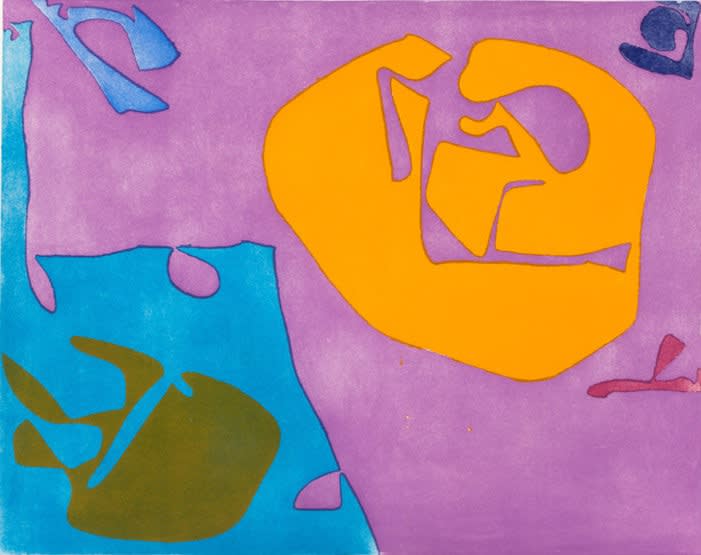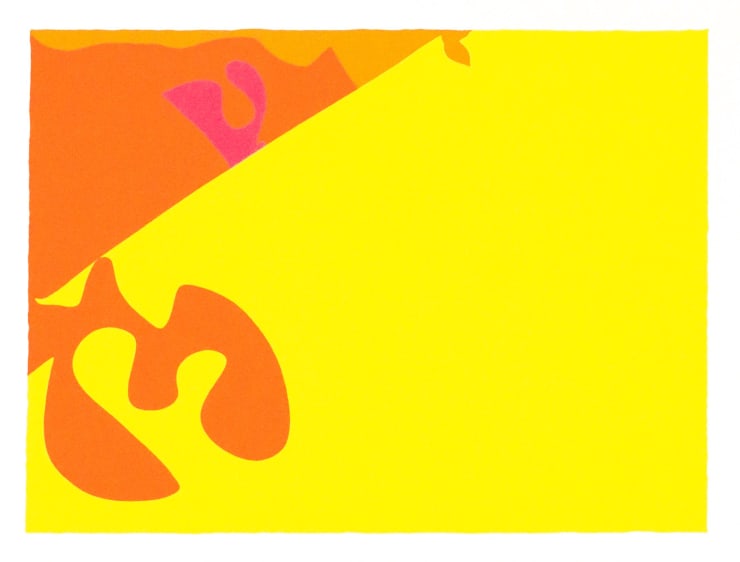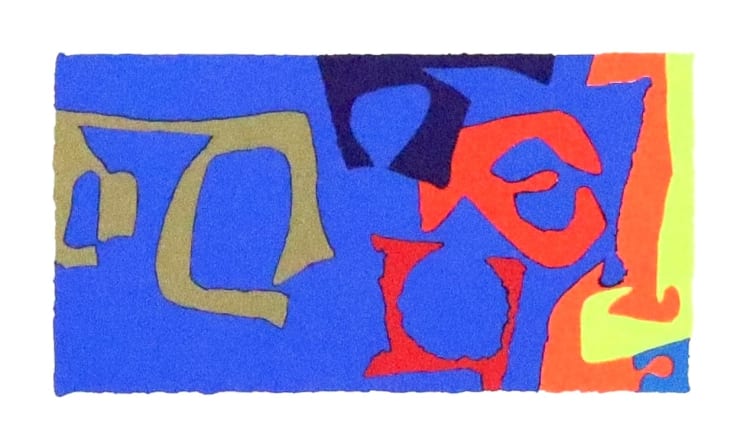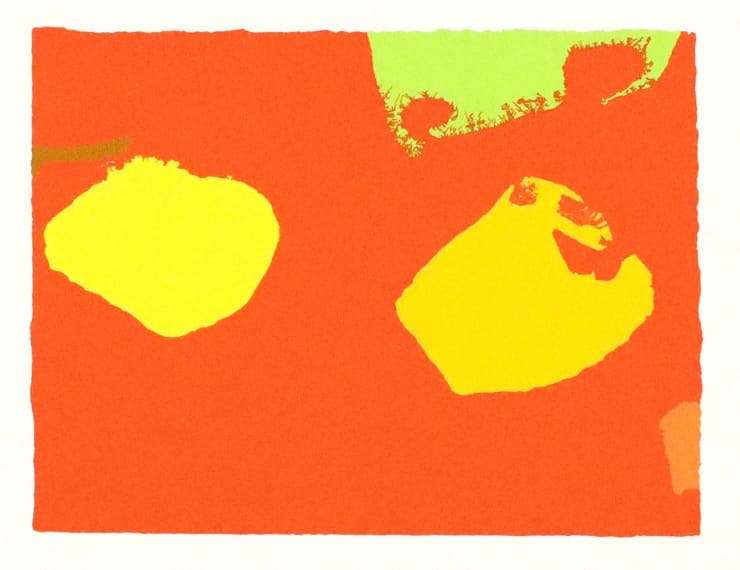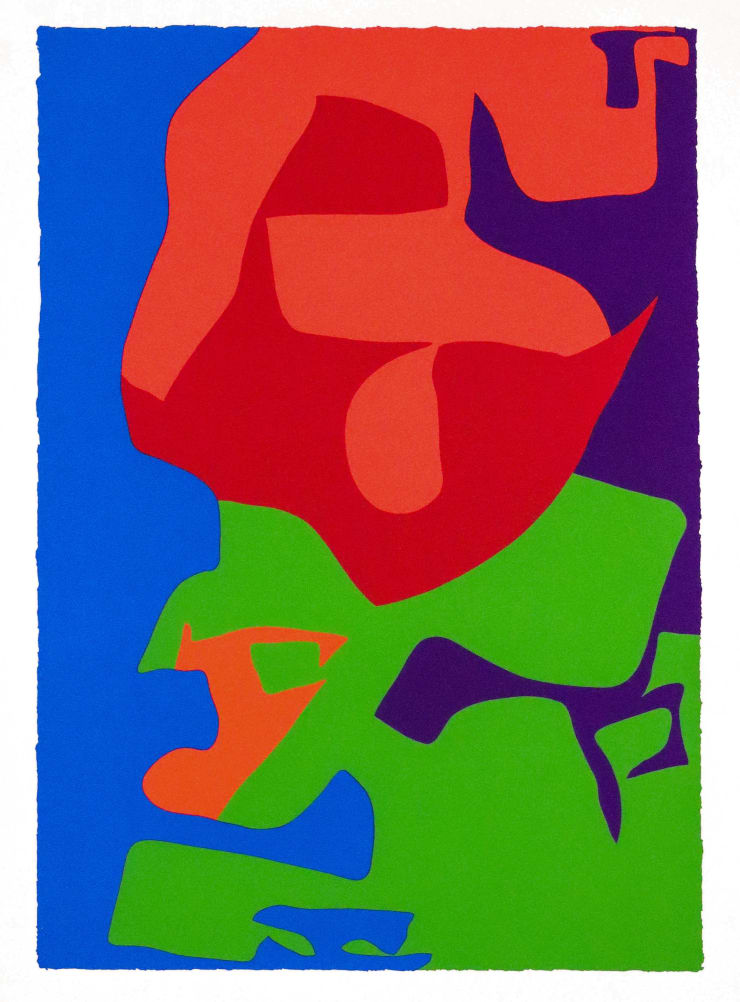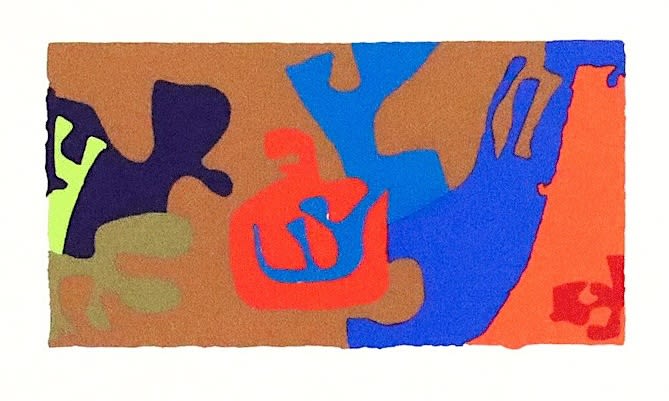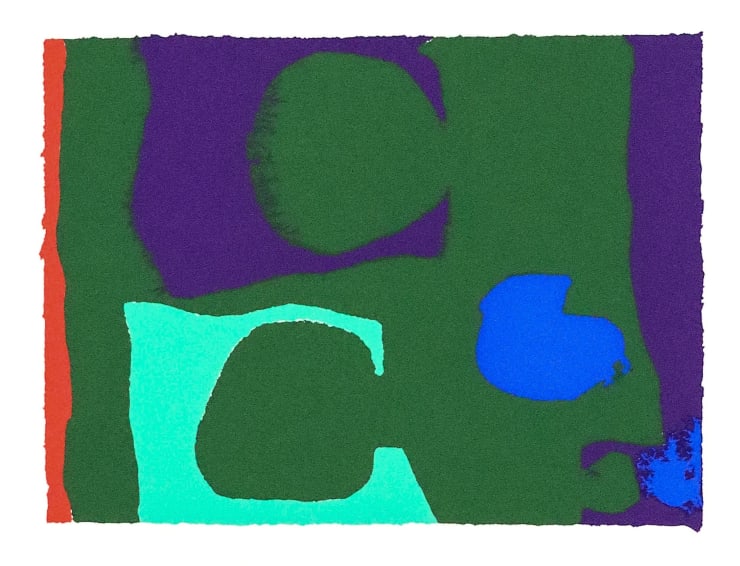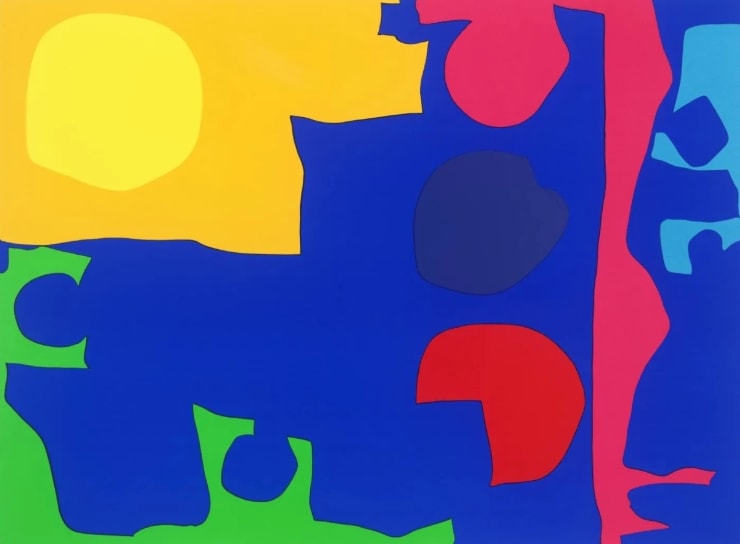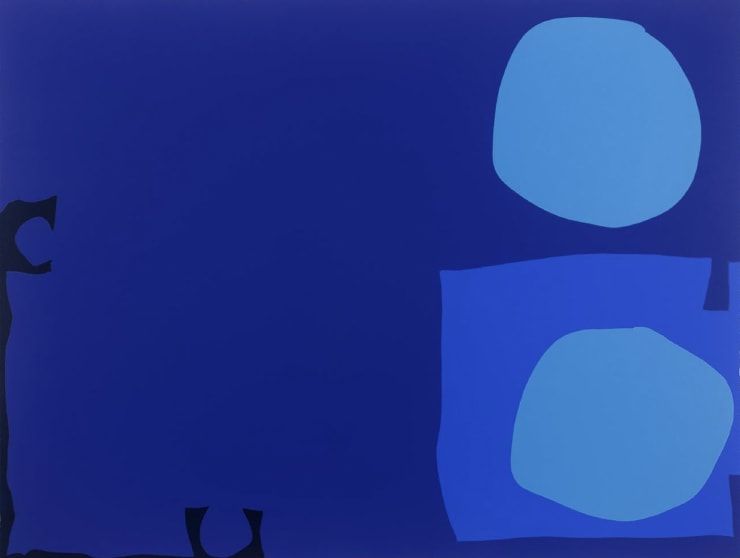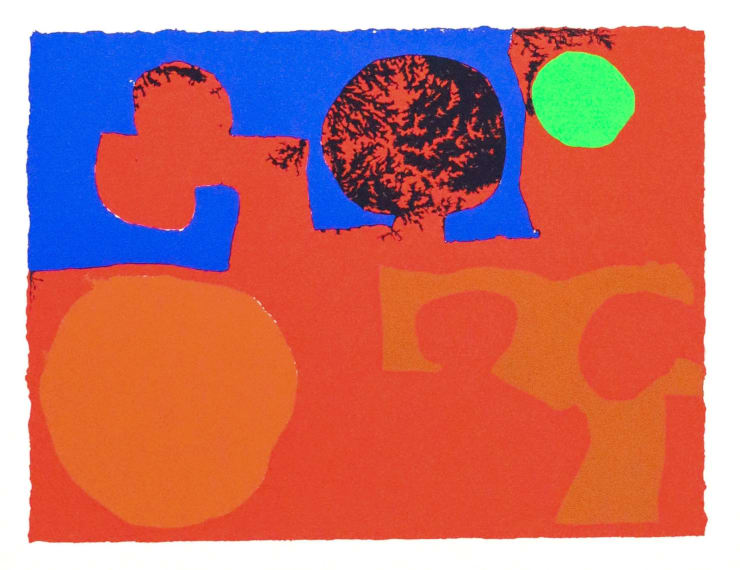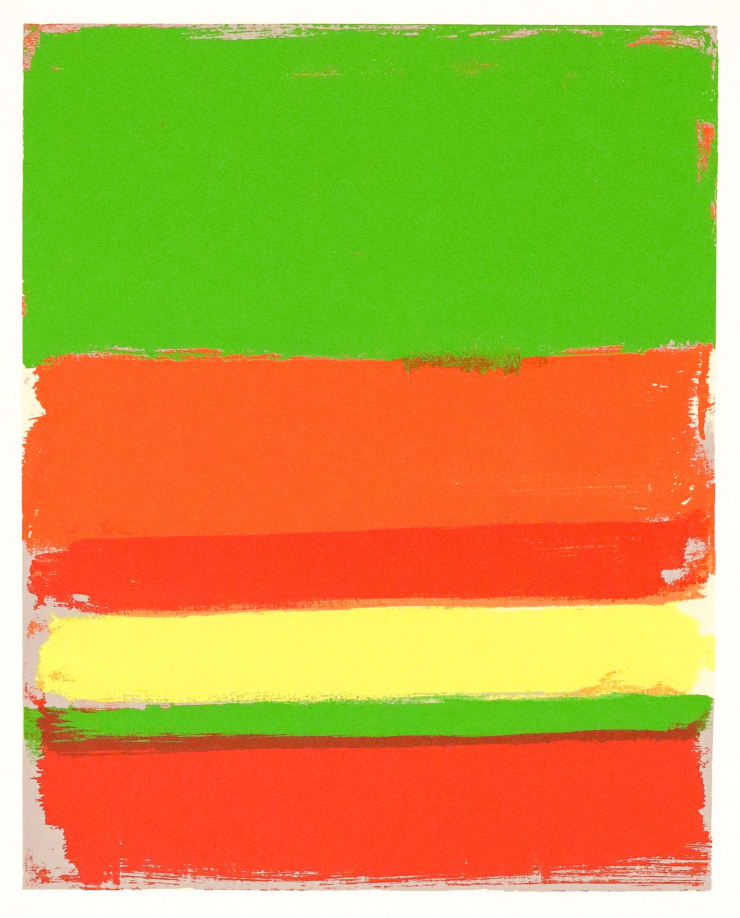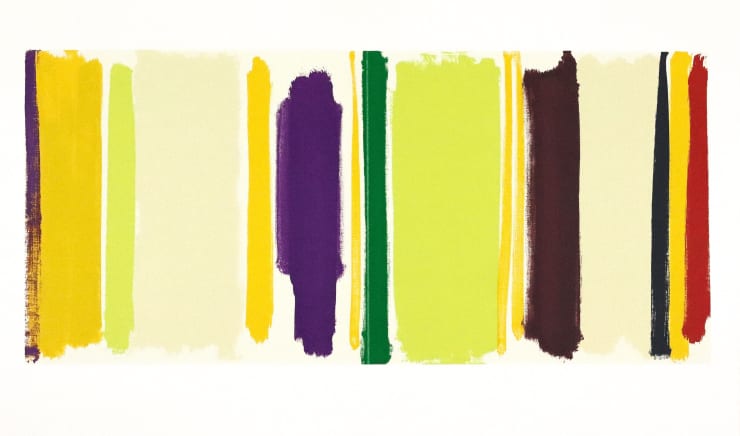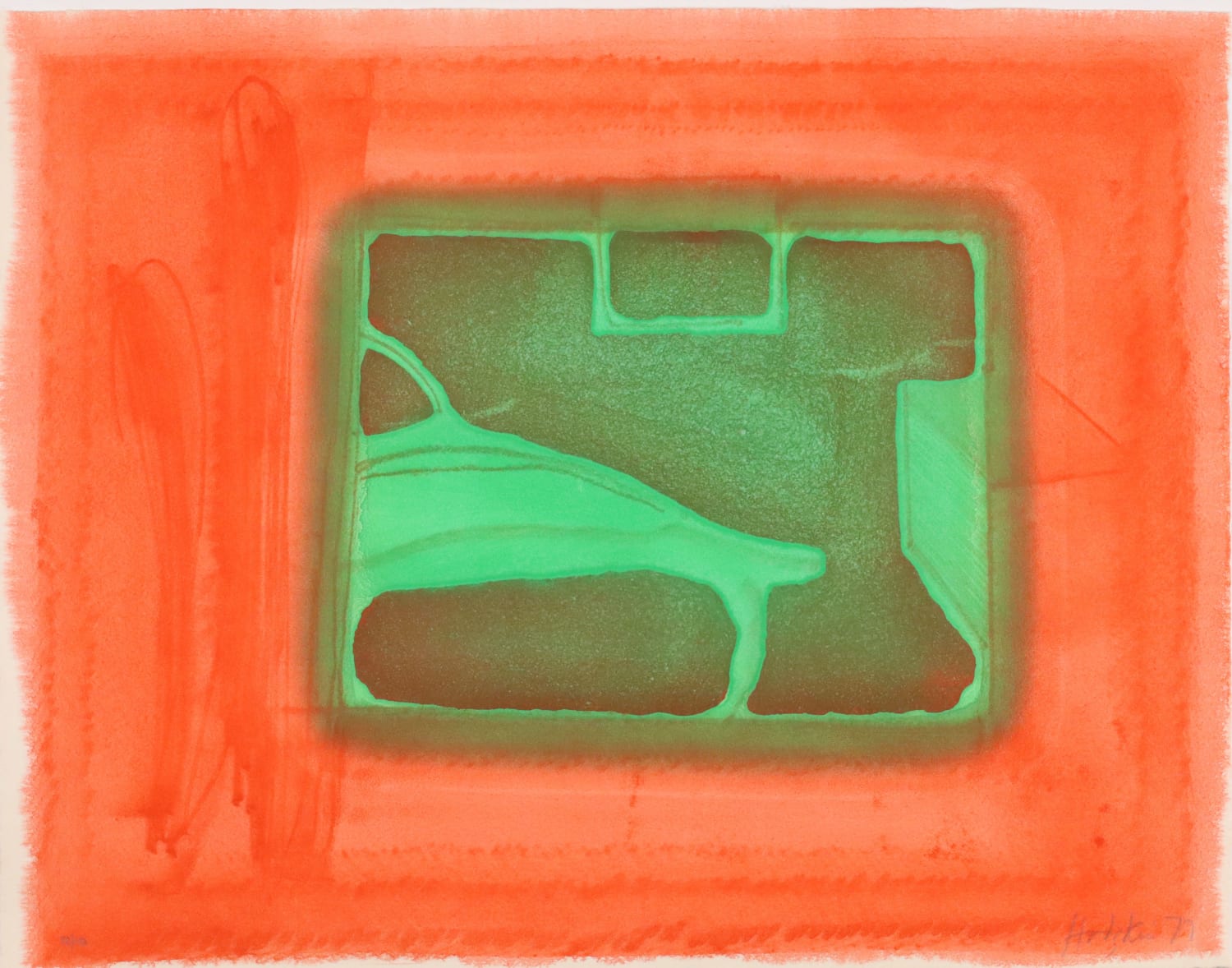Patrick Heron
Patrick Heron (1920–1999) was a British painter and writer celebrated for his vibrant explorations of colour and form. Born in Leeds, he spent much of his life in Cornwall, where the coastal light and landscape deeply influenced his work. Early in his career, Heron was inspired by artists like Cézanne, Matisse, and Braque, leading to a shift from figurative painting to abstraction. His compositions often feature bold, interlocking shapes and luminous colour fields, reflecting his belief in the expressive power of colour.
In 1956, Heron moved permanently to Eagles Nest in Zennor, Cornwall, marking a significant period of artistic development. There, he produced his renowned 'stripe' paintings and later, his 'wobbly hard-edge' works, characterized by dynamic forms and vibrant hues. Beyond painting, Heron was an influential art critic, contributing essays that championed modernist principles. His work was exhibited widely, including major retrospectives at Tate Britain and the Barbican Art Gallery.
Heron's contributions to art extended to design, notably creating a stained-glass window for Tate St Ives. His paintings are held in prominent collections such as the Tate, the Museum of Modern Art in New York, and the Victoria and Albert Museum. Through his innovative use of colour and form, Heron remains a pivotal figure in post-war British art.
-
 Patrick HeronNight Violet, 1980Sold
Patrick HeronNight Violet, 1980Sold -
 Patrick HeronViolet Diagonal, 1978Framed£2,950.00
Patrick HeronViolet Diagonal, 1978Framed£2,950.00 -
 Patrick HeronYellow Diagonal, 1978Framed£2,690.00
Patrick HeronYellow Diagonal, 1978Framed£2,690.00 -
 Patrick HeronRed in Umber with Orange and Ice-Green , 1977FramedSold
Patrick HeronRed in Umber with Orange and Ice-Green , 1977FramedSold -
 Patrick HeronBlue with Lime, Umber, Dull Red and Orange in Violet, 1976Framed£2,690.00
Patrick HeronBlue with Lime, Umber, Dull Red and Orange in Violet, 1976Framed£2,690.00 -
 Patrick HeronFirst Vertical Screenprint, 1976Framed£2,950.00
Patrick HeronFirst Vertical Screenprint, 1976Framed£2,950.00 -
 Patrick HeronKatherine Christmas, 1976Framed£2,090.00
Patrick HeronKatherine Christmas, 1976Framed£2,090.00 -
 Patrick HeronLime and Yellows in Orange, 1976Framed£2,500.00
Patrick HeronLime and Yellows in Orange, 1976Framed£2,500.00 -
 Patrick HeronSecond Vertical Screenprint, 1976FramedSold
Patrick HeronSecond Vertical Screenprint, 1976FramedSold -
 Patrick HeronSusanna Christmas, 1976Framed£2,090.00
Patrick HeronSusanna Christmas, 1976Framed£2,090.00 -
 Patrick HeronTwo Greens with Violet and Blue, 1976FramedSold
Patrick HeronTwo Greens with Violet and Blue, 1976FramedSold -
 Patrick HeronMini February V, 1974Framed£2,500.00
Patrick HeronMini February V, 1974Framed£2,500.00 -
 Patrick HeronMini January VIII, 1974Framed£2,500.00
Patrick HeronMini January VIII, 1974Framed£2,500.00 -
 Patrick HeronMini Mini, 1972Framed£2,390.00
Patrick HeronMini Mini, 1972Framed£2,390.00 -
 Patrick HeronEight including Ultramarine, 1971FramedSold
Patrick HeronEight including Ultramarine, 1971FramedSold -
 Patrick HeronFour Blues, Two Discs, 1970FramedSold
Patrick HeronFour Blues, Two Discs, 1970FramedSold -
 Patrick HeronJune Mini 5, 1968Framed£2,690.00
Patrick HeronJune Mini 5, 1968Framed£2,690.00 -
 Patrick HeronSmall Horizon with Orange, Lime, Lemon and Cherry, 1957Framed£3,140.00
Patrick HeronSmall Horizon with Orange, Lime, Lemon and Cherry, 1957Framed£3,140.00 -
 Patrick HeronVertical Light , 1957FramedSold
Patrick HeronVertical Light , 1957FramedSold
